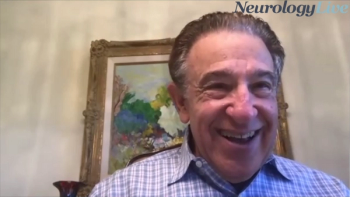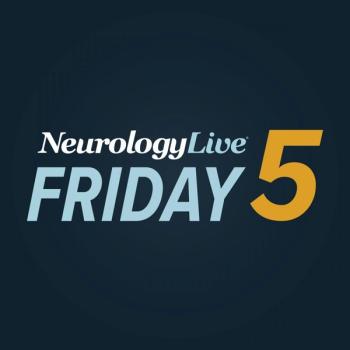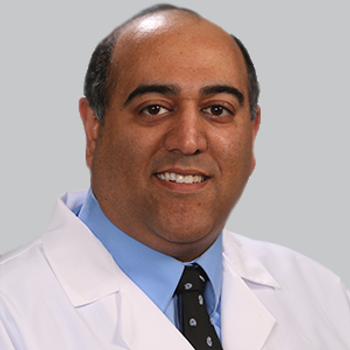
Findings presented at AAIC 2021 found that long-term, daily treatment with non-invasive stimulation was both safe and well-tolerated in patients with Alzheimer disease.

Findings presented at AAIC 2021 found that long-term, daily treatment with non-invasive stimulation was both safe and well-tolerated in patients with Alzheimer disease.

Pooled data from the phase 3 clinical development of aducanumab (Aduhelm; Biogen) suggest that ARIA remains a mostly asymptomatic problem, with MRI providing an effective way to monitor events.

The agent, which is FDA-approved for hyperlipidemia, showed significant improvements in plasma glucose, lipid levels, and trends in cardiovascular imaging biomarkers.

Following the publication of new guidelines for the care of adults poststroke, the president of the American Heart Association commented on streamlining systems of care to manage acute stroke and foster long-term prevention.

Many applicants referenced an early interest and exposure to neurology, often describing their first courses in neurology sparking their desire to learn more about how the brain works.

The president of the American Heart Association spoke on the newly published scientific statement and its implications for the clinical stroke treating community.

Here's what is coming soon to NeurologyLive.

The chief medical officer of Scholar Rock discussed the upcoming phase 3 trial for apitegromab in SMA and whether a successful trial would warrant FDA submission.

The director of Montefiore Hudson Valley Center of Excellence for Alzheimer’s Disease, associate professor of neurology, Albert Einstein College of Medicine, discussed recent developments in Alzheimer disease research, including FDA approval of aducanumab, as well as the importance of engaging community-based organizations to improve patient care.

The neurologist from Banner Health and chief medical officer of the MS Association of America discussed how much a patients prognosis plays into the treatments utilized.

Investigators observed declines in delayed verbal recall in 20% to 30% of individuals who underwent a dominant temporal lobe resection for treatment of epilepsy.

Neurology News Network for the week ending July 24, 2021.

Investigators evaluated the occurrence of multiple sclerosis and neuromyelitis optica spectrum disorder in Australian and New Zealand Indigenous populations, comparing data with ancestral data.

Take 5 minutes to catch up on NeurologyLive's highlights from the week ending July 23, 2021.

Alfred Sandrock, MD, PhD, head of research and development, Biogen, has published an open letter to the Alzheimer community in an attempt to clarify “misinformation and misunderstanding” that has moved “outside the boundaries of legitimate scientific deliberation.”

The director of the Montefiore Hudson Valley Center of Excellence for Alzheimer’s Disease commented on social determinants of health in relation to telemedicine and community willingness to engage.

The Integrated Cognitive Assessment showed convergent validity with both MoCA and ACE and offers potential for remote measurement of cognitive performance in Alzheimer disease and mild cognitive impairment.

Raman Malhotra, MD, associate professor of neurology, Washington University in St. Louis, and president, AASM, discussed the state of research in sleep medicine and the gaps in care that need to be addressed.

The director of the Sleep-Wake Disorders Center at Montefiore Medical Center discussed the adjustments clinicians and patients with sleep disorders made throughout the pandemic, including the increased use of telemedicine.

Basis for the approval was the SENZA-PDN randomized controlled trial, which showed the system’s ability to substantially sustain pain relief and improve health-related quality of life.

In Alzheimer disease and dementia, Jessica Zwerling, MD, MS, director, Montefiore Hudson Valley Center of Excellence for Alzheimer’s Disease, believes normalizing trial recruitment aids and telehealth to increase participation is another way to ease delivery of care.

While rituximab treatment puts patients at a higher risk for infectious disease in general, use of such treatment poses particular risk for severe COVID-19 infections in patients with MS.

Treatment retention with cenobamate ranged from 73% of patients at 1 year to 59% of patients at 6 years.

The associate professor of neurology at Mayo Clinic Rochester discusses technological advancements and research efforts in relation to differential multiple sclerosis.

The majority of tests with the tool correlated with Expanded Disability Status Scale scores, 29-item Multiple Sclerosis Impact Scale items or subscales scores, and/or normalized brain volume measures.

The associate professor of neurology at Mayo Clinic Rochester, commented on biomarkers for identifying MS in patients, as well as the significance of new MS consensus guidelines.

Data suggest a link between different disease-modifying strategies and the occurrence of depression when treating patients with MS.

The neurologist from Banner Health and chief medical officer of the MS Association of America discussed the ongoing debate of when to administer high efficacy treatments throughout the MS disease progression.

The duo from Cleveland Clinic stressed the reasons for conducting real-world data assessing migraine treatments and why it can lead to the ultimate goal of treatment optimization.

The data also indicated that ticagrelor plus aspirin treatment prevents disabling stroke in the subgroups of patients presenting with minor and with moderate stroke.